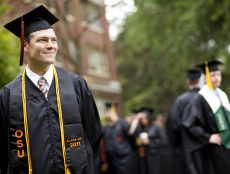
The rise of technologies and their applications in every aspect of society has increased massively in the digital age. In the vast majority of cases, it’s for the best. Education is one of the industries that has been altered by the technology the hard way. In this article, courtesy of Belitsoft (an eLearning development company) we will explore the definition of blended learning, study its models, and also predict the way it is going to develop in the future.
Blended Learning Now – Definition
There is no single definition of the term ‘blended learning.’ The terms “mixed” or “hybrid” learning in most cases are interchangeable and describe the same learning trend.
In simple words, it is “the particular forms of teaching with technology.” The older these definition are dated, the more words they use to describe the trend. Speaking of technology, Belitsoft is the company that produces all kinds of eLearning solutions.
Back in 2000, only about 45,000 K-12 students took any online course at least once. Ten years later, almost one-third of all the students (32%, 3 million) in the US have taken at least one online course, with numbers approaching 50% of all students in 2019.
According to edglossary.com:
“The term blended learning is generally applied to the practice of using both online and in-person learning experiences when teaching students”
So blended learning is closely interlinked with the following three things:
- Partial learning takes place online. The student has some control over their learning path and pace of consuming the content.
- Some learning happens in an instructor-led classroom.
- Online and in-person learning integrate, creating a nice learning environment.
Things that define blended learning and give a more in-depth look into it are described in the next chapter of the article.
For now, we should plant the seed in your mind that blended learning is not a complete online course broadcast on the internet. It is the combination of in-person and online elements that operate together to create a more developed learning experience.
The Models of Blended Learning
As there is no strict definition of the term blended learning, there are multiple models of the trend in action and various sources state different quantity of them.
We follow Blended: Using Disruptive Innovation to Improve Schools by Michael B. Horn and Heather Stacker as an authority describing all the models.
According to these experts, there are currently four models of blended learning.
These are:
- Rotation model
- Flex model
- A la carte model
- Enriched virtual model

Let’s have a more detailed look at all of them.
1. Rotation Model
This is one of the most common models in blended learning. Students within a single class rotate through stations on a fixed schedule (or at the teacher’s discretion), where at least one of the stations is an online learning station.
It is most commonly applied in elementary schools. Most of the learning takes place on a physical campus.
The classic example of the Rotation Model in practice is the Flipped Classroom.
A flipped classroom is the one where students are introduced to content at home, and practice working through it at school.
Rotation model, in turn, includes four different varieties:
- Station rotation
- Lab rotation
- Flipped Classroom
- Individual Rotation
2. Flex Model
The flex model allows students to have fluid schedules among learning activities based on their needs. Online learning is key in this model. The online presence is bigger in comparison with the rotation model, for instance.
Teachers are able to assist students and support them. Studying takes place on a flexible, as-needed basis while students work through course curriculum and content. This model can give students a high degree of control over their learning.
3. A-La-Carte Model
The A-La-Carte model allows students to take an online course with an online tutor as a supplement for their face-to-face courses. It makes students’ schedules more flexible in comparison with traditional forms of learning.
A-La-Carte courses are great when schools lack the opportunity to provide its students with certain learning opportunities (e.g. elective courses of an advanced placement).
Also, the tutor is able to expand the range of study resources that learners may choose from. That contributes to boosting motivation and personalizes the learning path in the end.
Thanks to the system, students can take a few self-study courses while preparing for their state exams or working on credit recovery. It saves time and money spent on commuting.
Implementing the A-La-Carte Model can be quite a challenging task for tutors. Online courses creation requires technical skills and some sort of eLearning background. However, creating existing high-quality online courses that fit the studying course.
4. Enriched Virtual Model
The Enriched Virtual model is an alternative to a full-time online school that allows students to complete the majority of coursework online, at home, or outside of school, but attend required face-to-face learning sessions with a teacher.
Unlike the Flipped Classroom, Enriched Virtual programs usually don’t require daily school attendance. In rare cases, some courses require twice-weekly attendance or something of that kind.
What To Expect from Blended Learning (Summary)
As the stats show us, blended learning is becoming more and more popular and effective in the K-12 sector and among different companies.
While some people are not yet ready to fully turn to eLearning, blended learning is definitely a step towards progress.
However, it must go beyond the basic combination of online courses with traditional education.
The approach is not that simple. Among the obstacles of blended learning are high development costs and under-equipped classes in the K-12 sector.
During the last 20 years, it’s been a great improvement, as now over half of the K-12 students in the US have taken at least one online course. This numbers will continue to improve according to the industry experts.
Featured Image: Annie Spratt, Unsplash.









3 Comments